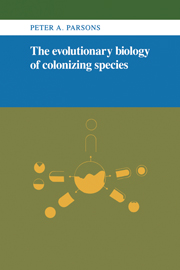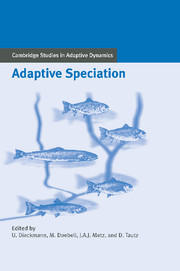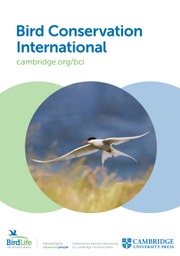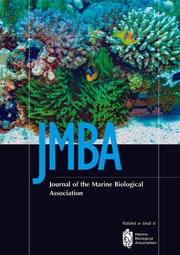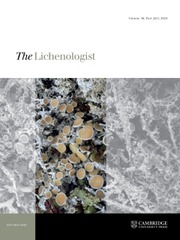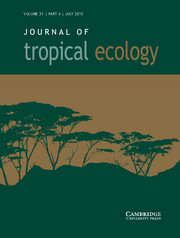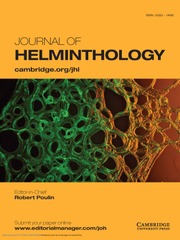Cryptic Species
Morphological Stasis, Circumscription, and Hidden Diversity
Part of Systematics Association Special Volume Series
- Editors:
- Alexandre K. Monro, Royal Botanic Gardens, Kew
- Simon J. Mayo, Royal Botanic Gardens, Kew
- Date Published: September 2022
- availability: Not yet published - available from October 2024
- format: Hardback
- isbn: 9781316513644
Hardback
Other available formats:
eBook
Looking for an inspection copy?
This title is not currently available for inspection. However, if you are interested in the title for your course we can consider offering an inspection copy. To register your interest please contact [email protected] providing details of the course you are teaching.
-
Cryptic species are organisms which look identical, but which represent distinct evolutionary lineages. They are an emerging trend in organismal biology across all groups, from flatworms, insects, amphibians, primates, to vascular plants. This book critically evaluates the phenomenon of cryptic species and demonstrates how they can play a valuable role in improving our understanding of evolution, in particular of morphological stasis. It also explores how the recognition of cryptic species is intrinsically linked to the so-called 'species problem', the lack of a unifying species concept in biology, and suggests alternative approaches. Bringing together a range of perspectives from practicing taxonomists, the book presents case studies of cryptic species across a range of animal and plant groups. It will be an invaluable text for all biologists interested in species and their delimitation, definition, and purpose, including undergraduate and graduate students and researchers.
Read more- Provides a theoretical and practical perspective to cryptic species, encouraging readers to consider weaknesses in the definition and delimitation of species
- Proposes morphological stasis as the evolutionary process which give cryptic species an important role in the study of evolution
- Presents case studies of cryptic species across a broad range of animal and plant groups, offering readers practical examples of how cryptic species are identified and treated within the taxonomic community
Reviews & endorsements
'This is rewarding reading for evolutionary biologists and geneticists, and perhaps also for philosophers … Recommended.' M. Gochfeld, Choice
Customer reviews
Not yet reviewed
Be the first to review
Review was not posted due to profanity
×Product details
- Date Published: September 2022
- format: Hardback
- isbn: 9781316513644
- length: 350 pages
- dimensions: 262 x 210 x 22 mm
- weight: 0.89kg
- contains: 75 b/w illus.
- availability: Not yet published - available from October 2024
Table of Contents
List of Contributors
1. Introduction Alexandre K. Monro
2. Cryptic species: A product of the paradigm difference between taxonomic and evolutionary species Simon J. Mayo
3. Species circumscription in cryptic clades: A Nihilist's view Richard M. Bateman
4. Multilevel organismal diversity in an ontogenetic framework as a solution for the species concept Alexander Martynov and Tatiana Korshunova
5. Diagnosability and cryptic nodes in Angiosperms: A case study from Ipomoea Pablo Muñoz-Rodríguez, John. R. I. Wood and Robert W. Scotland
6. Connecting micro- and macro-evolutionary research – extant cryptic species as systems to understand macro-evolutionary stasis Torsten H. Struck and José Cerca
7. Coexisting cryptic species as a model system in integrative taxonomy Cene Fišer and Klemen Koselj
8. Non-monophyletic species are common in plants: An ecological evolutionary perspective Matt Lavin and R. Toby Pennington
9. Guerrilla taxonomy and discriminating cryptic species – is quick also dirty? Paul H. Williams
10. Cryptic lineages among Seychelles herpetofauna Jim Labisko, Simon T. Maddock, Sara Rocha, David J. Gower
11. Cryptic diversity in European terrestrial flatworms of the genus Microplana (Platyhelminthes, Tricladida, Geoplanidae) Marta Álvarez-Presas, Eduardo Mateos, Ronald Sluys and Marta Riutort.-
General Resources
Find resources associated with this title
Type Name Unlocked * Format Size Showing of
This title is supported by one or more locked resources. Access to locked resources is granted exclusively by Cambridge University Press to lecturers whose faculty status has been verified. To gain access to locked resources, lecturers should sign in to or register for a Cambridge user account.
Please use locked resources responsibly and exercise your professional discretion when choosing how you share these materials with your students. Other lecturers may wish to use locked resources for assessment purposes and their usefulness is undermined when the source files (for example, solution manuals or test banks) are shared online or via social networks.
Supplementary resources are subject to copyright. Lecturers are permitted to view, print or download these resources for use in their teaching, but may not change them or use them for commercial gain.
If you are having problems accessing these resources please contact [email protected].
Sorry, this resource is locked
Please register or sign in to request access. If you are having problems accessing these resources please email [email protected]
Register Sign in» Proceed
You are now leaving the Cambridge University Press website. Your eBook purchase and download will be completed by our partner www.ebooks.com. Please see the permission section of the www.ebooks.com catalogue page for details of the print & copy limits on our eBooks.
Continue ×Are you sure you want to delete your account?
This cannot be undone.
Thank you for your feedback which will help us improve our service.
If you requested a response, we will make sure to get back to you shortly.
×

